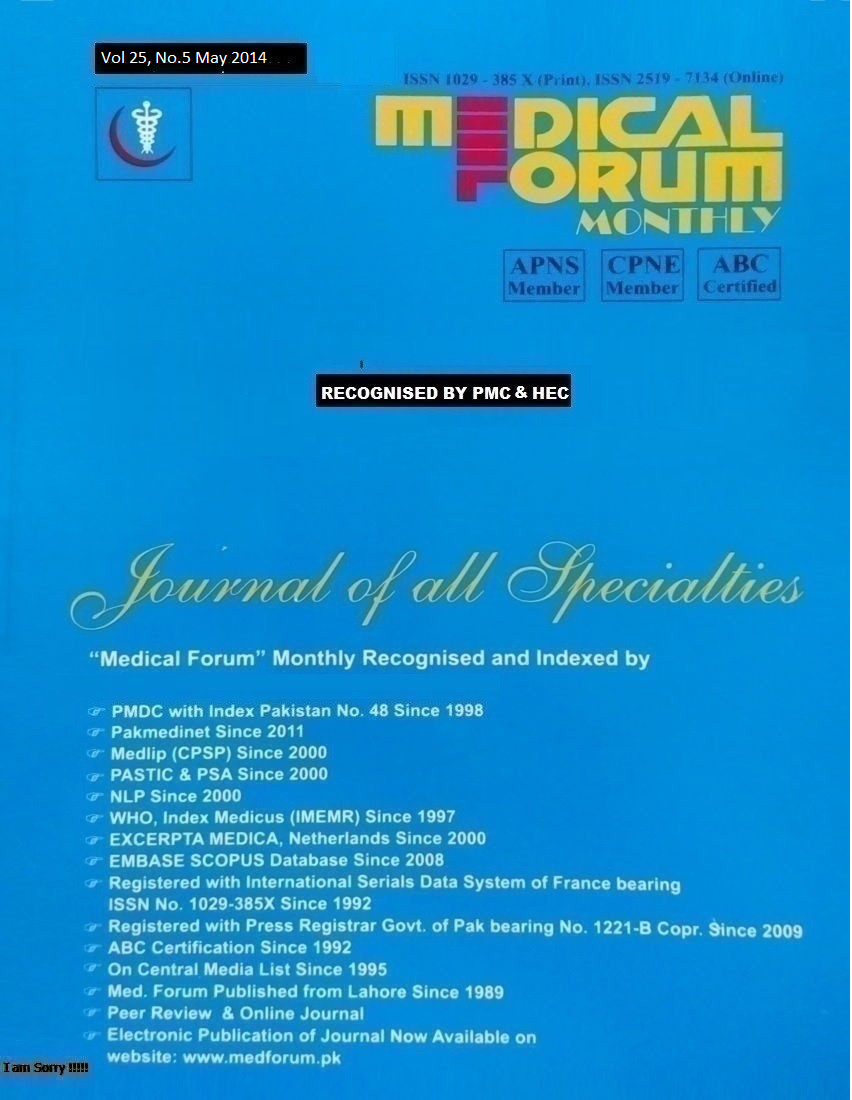
17. Frequency of Urinary Symptoms in Post Menopausal Women with Uerovaginal Prolapse
1. Samina 2. Irshad Nabi 3. Ghulam Nabi Khokhar 4. Israr Ahmed Akhund
5. Muhammad Ishaq
1. Asstt. Prof. of Obst & Gynae, 2. Asstt. Prof. of Community Medicine, 3. Prof. of Pharmacology 4. Prof. of Physiology, 5. Prof. of Surgery, Jinnah Medical College Peshawar
ABSTRACT
Objective: To determine the frequency of urinary symptoms in postmenopausal women with Uterovaginal Prolapse Study Design: Descriptive study
Place and Duration of Study: This study was conducted in Department of Obstetrics & Gynecology Unit II , Dow University of Health Sciences & Civil Hospital Karachi Pakistan from July 2006 to June 2007/
 Materials and Methods: 60 (sixty) Consecutive pts were included in the study through structural Proforma from the outpatient, ward or emergency. Informed consent was obtained. A detailed history and related examinations and investigations were done. These include Urine DR, Urine C/S and Urodynamics like cystometry in selected patients. Results: Majority of Women found have symptoms were at the age of 60 yr (36.66%) While urinary symptoms less seen at the age of 80 yr (6.66%) while Parity 6-10 was higher in Postmenopausal women to have urinary symptoms (63.33%). The urinary symptoms found in Postmenopausal women were frequent urine passing (33.33%), Nocturia (83.33%), Retention of urine (20.0%), Dysuria (26.66%), Voiding difficulty (53.35%), Urge incontinence (20.0%) and Stress incontinence (53.33%).
Materials and Methods: 60 (sixty) Consecutive pts were included in the study through structural Proforma from the outpatient, ward or emergency. Informed consent was obtained. A detailed history and related examinations and investigations were done. These include Urine DR, Urine C/S and Urodynamics like cystometry in selected patients. Results: Majority of Women found have symptoms were at the age of 60 yr (36.66%) While urinary symptoms less seen at the age of 80 yr (6.66%) while Parity 6-10 was higher in Postmenopausal women to have urinary symptoms (63.33%). The urinary symptoms found in Postmenopausal women were frequent urine passing (33.33%), Nocturia (83.33%), Retention of urine (20.0%), Dysuria (26.66%), Voiding difficulty (53.35%), Urge incontinence (20.0%) and Stress incontinence (53.33%).
Conclusion: Pelvic organ Prolapse and urinary symptoms like incontinence are prevalent in older women and are associated with age. Large studies are required to assess the relationship of urinary symptoms with Uterovaginal Prolapse. Because these urinary symptoms effect over quality of life of women so it is recommended to reduce genital prolapsed and associated urinary symptoms by implementing some measures such as health education of women and weight control.
Key Words: Postmenopausal, Uterovaginal Prolapse, urinory symptoms
